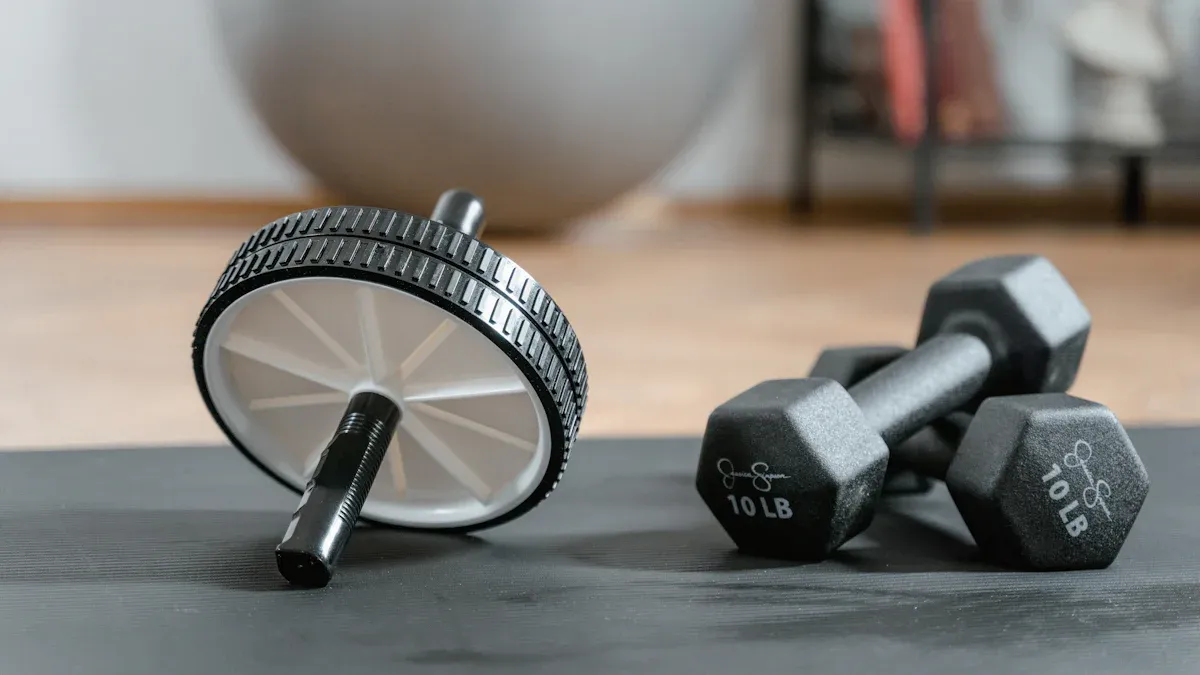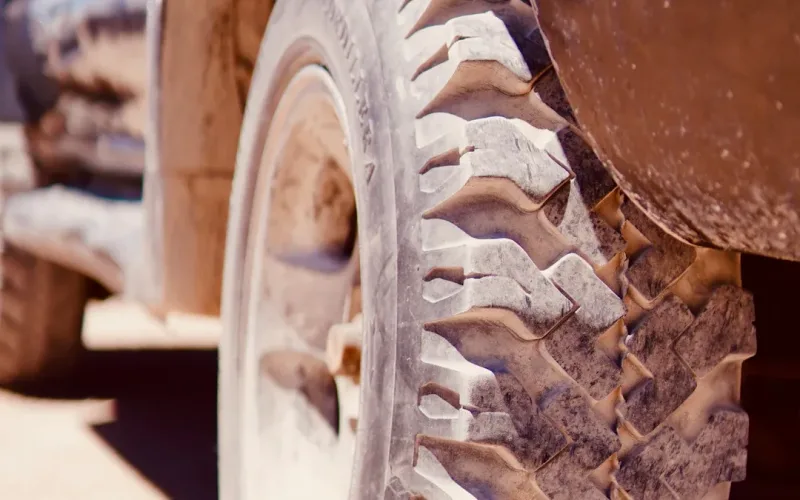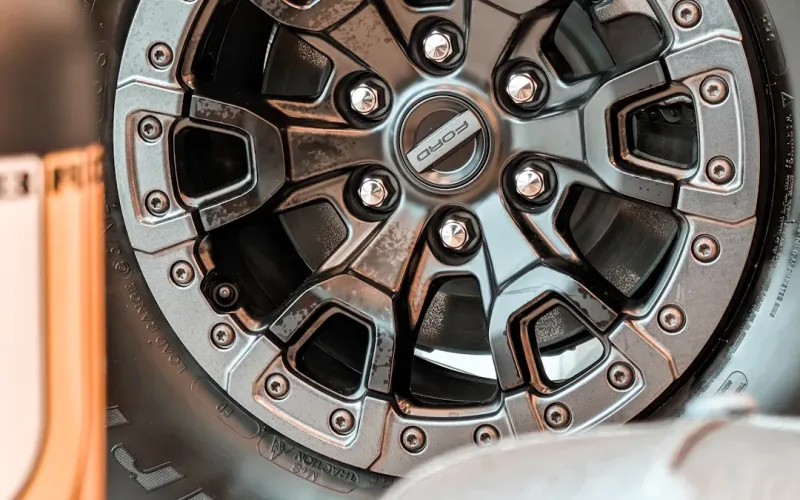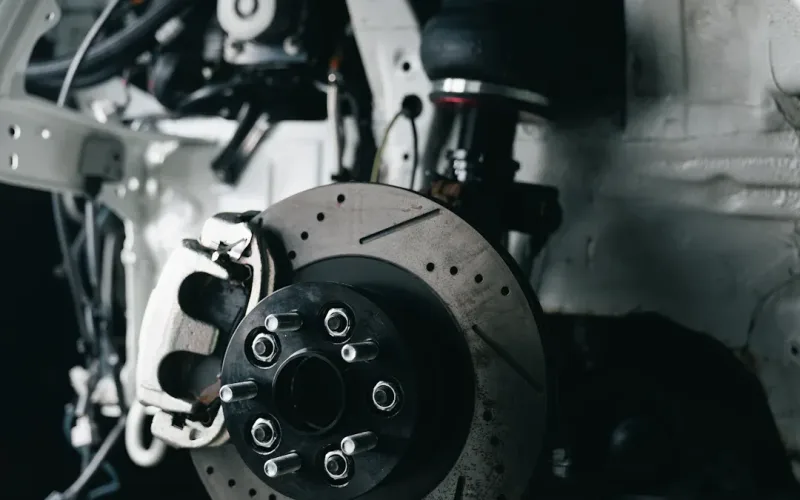

admin1
May 5, 2025
How Balance Weight Wheel Reduces Vibrations and Improves Safety

You might not realize it, but balance weight wheels play a critical role in your vehicle’s performance and safety. When your wheels are properly balanced, they rotate smoothly, reducing vibrations that can make your ride uncomfortable. Studies show that balanced wheels lower the vertical acceleration of the vehicle body, enhancing stability and minimizing wear on tires. This process also improves fuel efficiency by reducing rolling resistance. Without balanced wheels, you risk uneven tire wear, increased noise, and potential damage to your suspension system. By using balance weight wheels, you ensure a safer and more comfortable driving experience.
Understanding Wheel Balancing
What Is Wheel Balancing?
Wheel balancing is the process of ensuring that the weight of a tire and wheel assembly is evenly distributed around its axis of rotation. This balance prevents uneven forces that can cause vibrations when the vehicle is in motion. During the wheel balancing process, technicians use specialized equipment to measure the imbalance and determine where weights should be added to correct it.
The concept of wheel balancing has evolved significantly over time. In 1945, Marcellus Merrill introduced electronic dynamic wheel balancing, which allowed technicians to balance wheels while they were still on the vehicle. This innovation improved accuracy by detecting vibrations electronically, a method that remains influential today. Modern balancing techniques include both on-car and off-car methods, with dynamic balancing algorithms enhancing precision and efficiency.
Industry standards, such as ISO 21940, guide the wheel balancing process. These standards specify acceptable unbalance levels, such as less than ¼-oz. per plane on a 15-inch rim. Advanced software now automates calculations, ensuring accurate results and saving time during the balancing procedure.
Why Is Proper Wheel Balancing Important?
Proper wheel balancing is essential for maintaining your vehicle’s performance, safety, and comfort. When wheels are balanced correctly, they rotate smoothly, reducing vibrations that can make driving uncomfortable. This also prevents uneven tire wear, which extends the life of your tires and improves fuel efficiency.
Balanced wheels enhance vehicle handling, especially during cornering and braking. This improves safety by giving you better control over your car. Studies show that professional tire balancing reduces accident risks and increases vehicle stability. Additionally, balancing prevents damage to suspension components, saving you from costly repairs.
Various methods, such as balancing rings and internal balancing compounds, help maintain balance over time. These solutions are effective and safe for your tires, ensuring long-term performance. By prioritizing proper wheel balancing, you can enjoy a smoother ride and greater peace of mind on the road.
Types of Imbalances in Wheels
Static Imbalance: Causes and Effects
Static imbalance occurs when the weight of a wheel and tire assembly is unevenly distributed around its axis. This imbalance creates a “heavy spot” that disrupts smooth rotation, leading to noticeable vibrations as you drive. These vibrations often become more pronounced at speeds between 40 and 50 mph, making your ride uncomfortable and potentially unsafe.
Several factors contribute to static imbalance:
- Wheel and tire runout: This happens when the wheel or tire is not perfectly round, causing uneven weight distribution.
- Radial force variation (RFV): Variations in the stiffness of the tire can create uneven forces, leading to vibrations at specific speeds.
- Improper mounting: Incorrectly mounted tires can also result in weight imbalances.
The effects of static imbalance go beyond discomfort. It accelerates uneven tire wear, reducing the lifespan of your tires. Over time, this can increase maintenance costs and compromise your vehicle’s handling. Proper wheel balancing techniques, such as adding balance weights, are essential to address these issues and ensure a smoother ride.
Dynamic Imbalance: Causes and Effects
Dynamic imbalance occurs when the weight distribution of a wheel and tire assembly is uneven across its rotational axis. Unlike static imbalance, which affects only vertical motion, dynamic imbalance causes both vertical and lateral vibrations. These vibrations can make steering difficult and reduce vehicle stability.
Research highlights the following key findings about dynamic imbalance:
| Key Findings | Description |
|---|---|
| Measurement Techniques | Advanced methods measure dynamic forces at the wheel/rail interface, ensuring precise monitoring. |
| Impact of Defects | Surface defects on wheels or rails can lead to excessive wear and safety risks. |
| Continuous Measurement Benefits | Continuous monitoring provides detailed data, helping assess risks like wheel breakage. |
Dynamic imbalance often results from defects in the wheel or tire, such as uneven tread wear or damage. These issues can cause rolling contact fatigue, leading to long-term damage if left unaddressed. Regular wheel balancing and inspections help prevent these problems, ensuring your vehicle remains safe and efficient.
By understanding the causes and effects of both static and dynamic imbalances, you can take proactive steps to maintain your vehicle’s performance and safety.
How Balance Weight Wheels Work

The Physics of Tire Balancing
Balance weight wheels function based on fundamental physics principles like oscillation and rotational dynamics. When a tire rotates, any uneven weight distribution creates vibrations. These vibrations occur because the wheel’s center of mass shifts away from its axis of rotation. To counteract this, balance weight wheels are added to restore equilibrium.
The process relies on the moment of inertia, which measures how mass is distributed around the wheel’s axis. A balanced wheel has a uniform moment of inertia, ensuring smooth rotation. Oscillation also plays a role. The wheel’s period of oscillation depends on its moment of inertia and the stiffness of the balance spring. This consistency helps resist external vibrations, maintaining stability during motion.
Tire balancing corrects both static and dynamic imbalances. Static imbalance causes up-and-down vibrations, while dynamic imbalance leads to side-to-side vibrations. By adding balance weight wheels, you can eliminate these issues, ensuring a smoother ride and reducing wear on your tires.
Types of Balance Weight Wheels: Clip-On vs. Adhesive
Balance weight wheels come in two main types: clip-on and adhesive. Each type has unique advantages and is suited for specific applications.
Clip-On Weights:
These weights are designed for wheels with flanges, making them ideal for steel rims. They are quick to install and practical for standard vehicles. However, they may not be suitable for alloy wheels, as they can damage the rim’s surface.Adhesive Weights:
Adhesive weights are gaining popularity, especially for alloy and high-performance wheels. They offer a cleaner look since they can be hidden behind the spokes. Proper surface preparation is essential to ensure a strong bond. These weights are also easier to manufacture and have fewer SKUs, making them cost-effective. The trend toward flangeless alloy rims has further increased their demand.
| Feature | Clip-On Weights | Adhesive Weights |
|---|---|---|
| Best For | Steel rims | Alloy and high-performance rims |
| Installation | Quick and easy | Requires surface preparation |
| Aesthetic Appeal | Visible on the rim | Hidden behind spokes |
| Risk of Damage | May damage alloy rims | Minimal risk |
Choosing the right type depends on your vehicle and personal preferences. For a standard car with steel rims, clip-on weights are practical. If you prioritize aesthetics or drive a high-performance vehicle, adhesive weights are the better option.
Correct Placement of Balance Weight Wheels
Proper placement of balance weight wheels is crucial for achieving optimal performance. Incorrect placement can lead to persistent vibrations, uneven tire wear, and even rim damage. Follow these best practices to ensure accurate installation:
- Clean the back side of the wheel and hub bore thoroughly before mounting.
- Use appropriate tools or adapters to center the wheel correctly.
- Center the wheel using a centering cone from the back side to avoid contact with the interior.
- Clamp the wheel using flange plates or pin plates to protect it during centering.
- Double-check centering by comparing balance readings before and after repositioning the wheel.
- Measure eccentricity accurately to ensure proper alignment.
- Mark the high point of the tire and wheel assembly for eccentricity reduction.
Additionally, the type of weight used affects placement. Clip-on weights should be attached to the wheel’s flange, while adhesive weights must be applied to a clean, flat surface behind the spokes. Cleaning the wheel before applying adhesive weights ensures effective adhesion and prevents weight failure.
By following these guidelines, you can maximize the benefits of balance weight wheels. Proper placement reduces vibrations, enhances safety, and extends the life of your tires.
Benefits of Proper Wheel Balancing

Reduced Vibrations and Improved Comfort
Proper wheel balancing significantly reduces vibrations, making your driving experience smoother and more enjoyable. When balance weight wheels are installed correctly, they ensure even weight distribution across the tire-wheel assembly. This minimizes the shift in your vehicle’s center of mass, keeping the car steady over bumps and curves. Vibrations caused by static imbalance, which lead to vertical wobbling, are particularly noticeable at lower speeds. Dynamic imbalance, on the other hand, results in side-to-side wobbling that amplifies vibrations at higher speeds.
Balanced wheels rotate smoothly, eliminating unnecessary vibrations. This is especially beneficial during long journeys, where comfort becomes a priority. By reducing vibrations, properly balanced tires also protect your vehicle’s suspension system from excessive wear, ensuring a safer and more comfortable ride.
Tip: If you notice vibrations in your steering wheel or seat while driving, it may be time to check your tire balancing. Addressing these issues promptly can restore comfort and prevent further damage.
Enhanced Safety and Vehicle Stability
Proper wheel balancing plays a crucial role in enhancing safety and vehicle stability. Balanced wheels improve handling, allowing you to maintain better control during cornering, braking, and acceleration. This stability reduces the risk of accidents, especially at higher speeds where dynamic imbalance can compromise your ability to steer effectively.
Balanced wheels also prevent uneven tire wear, which can lead to unpredictable handling and reduced traction. When your tires wear evenly, they maintain consistent contact with the road surface, improving grip and reducing the likelihood of skidding. This is particularly important in wet or icy conditions, where stability is critical for safe driving.
By using balance weight wheels, you ensure that your vehicle remains stable and responsive, even in challenging driving situations. This added safety gives you peace of mind, knowing that your car is performing at its best.
Extended Tire Life and Better Fuel Efficiency
Proper wheel balancing extends the life of your tires by preventing uneven wear. Consumer Reports’ treadwear testing shows that family-car tires can last 70,000 miles or more when maintained correctly. Balanced wheels distribute weight evenly, reducing stress on specific areas of the tire and ensuring a longer lifespan.
Balanced tires also improve fuel efficiency. Research from Oak Ridge National Laboratory highlights the impact of tire pressure on fuel economy. When tire pressure drops to 75% or 50% of the recommended levels, fuel economy decreases by 2-3% and 10%, respectively. Proper tire balancing complements this by reducing rolling resistance, which further enhances fuel efficiency.
By investing in tire balancing, you save money in the long run. Extended tire life reduces replacement costs, while improved fuel efficiency lowers your expenses at the pump. Balance weight wheels are a simple yet effective solution for achieving these benefits.
Signs You Need Tire Balancing
Common Symptoms of Imbalanced Wheels
Imbalanced wheels often show clear signs that you can notice while driving. One of the most common symptoms is vibration. If your steering wheel shakes when driving at highway speeds, it could indicate an imbalance in the front wheels. Vibrations in the seat or floorboard usually point to issues with the rear wheels. These vibrations not only make driving uncomfortable but can also affect your control over the vehicle.
Another sign to watch for is uneven tire wear. Tires with scalloped or cupped patterns often result from imbalances. This uneven wear reduces the lifespan of your tires and can lead to costly replacements. Additionally, you might notice increased noise while driving. Imbalanced wheels can create a humming or thumping sound, especially at higher speeds.
Ignoring these symptoms can lead to more severe problems, such as damage to your suspension system. Addressing these issues early ensures a smoother and safer driving experience.
When to Seek Professional Wheel Balancing Services
Knowing when to consult a professional for tire balancing services is essential for maintaining your vehicle’s performance. Experts recommend balancing your wheels every 5,000 to 6,000 miles or during each tire rotation. If you recently installed new tires, balancing them ensures even weight distribution from the start.
You should also seek professional help if you hit a curb or pothole. Such impacts can disrupt the balance of your wheels. Vibrations in the steering wheel, seat, or floorboard are clear indicators that your wheels need attention. Additionally, if you notice scalloped tire wear patterns, it’s time to visit a professional.
Balancing is a straightforward process that improves safety and extends tire life. Regularly consulting experts ensures your vehicle remains in top condition.
Balance weight wheels are essential for maintaining your vehicle’s safety and performance. They reduce vibrations, improve handling, and prevent uneven tire wear. Regular wheel balancing ensures even weight distribution, extending tire life and enhancing driving comfort. Professional balancing uses specialized equipment to measure imbalances and apply counterweights, ensuring smooth tire rotation. By prioritizing wheel balancing, you enjoy a safer ride, better vehicle stability, and longer-lasting tires.
Tip: Schedule regular maintenance to keep your balance weight wheels functioning optimally and avoid costly repairs.
FAQ
1. How often should you balance your wheels?
You should balance your wheels every 5,000 to 6,000 miles or during each tire rotation. Regular balancing ensures even weight distribution, reduces vibrations, and extends tire life. If you notice vibrations or uneven tire wear, get your wheels checked immediately.
2. Can unbalanced wheels damage your car?
Yes, unbalanced wheels can harm your car. They cause vibrations that strain suspension components, leading to premature wear. Uneven tire wear also reduces traction and handling. Addressing imbalances promptly prevents costly repairs and ensures a safer driving experience.
3. What tools do professionals use for wheel balancing?
Professionals use specialized equipment like dynamic balancers and laser-guided machines. These tools measure imbalances precisely and determine where to place balance weights. Advanced technology ensures accurate results, improving your vehicle’s performance and safety.
4. Are adhesive weights better than clip-on weights?
Adhesive weights are ideal for alloy and high-performance wheels. They offer a cleaner look and reduce the risk of rim damage. Clip-on weights work well for steel rims but may not suit modern alloy wheels. Choose based on your vehicle type and aesthetic preference.
5. What happens if you ignore wheel balancing?
Ignoring wheel balancing leads to uneven tire wear, reduced fuel efficiency, and uncomfortable vibrations. Over time, it can damage your suspension system and compromise safety. Regular balancing prevents these issues, saving you money and ensuring a smoother ride.
Tip: Always consult a professional if you notice signs of imbalance, like vibrations or unusual tire wear.





